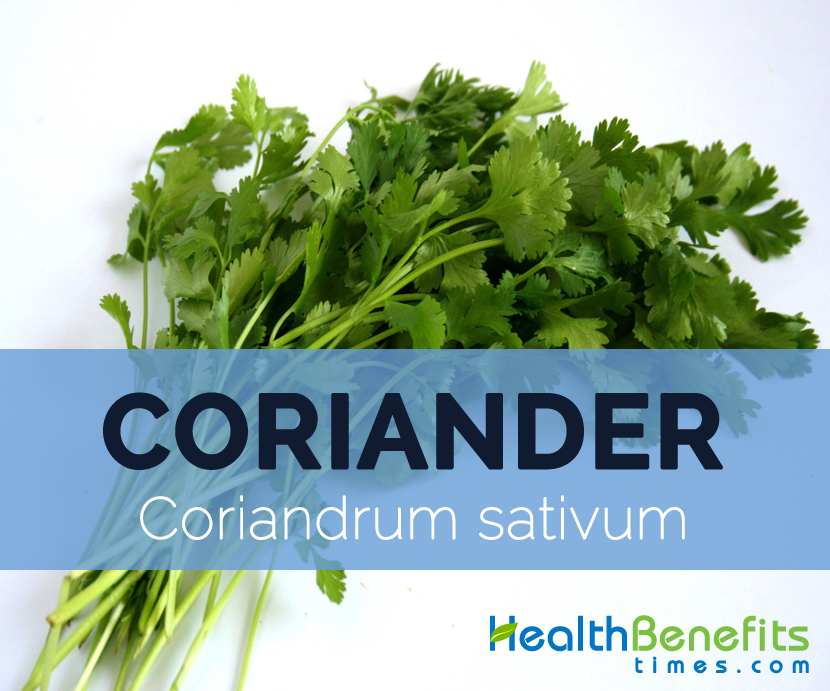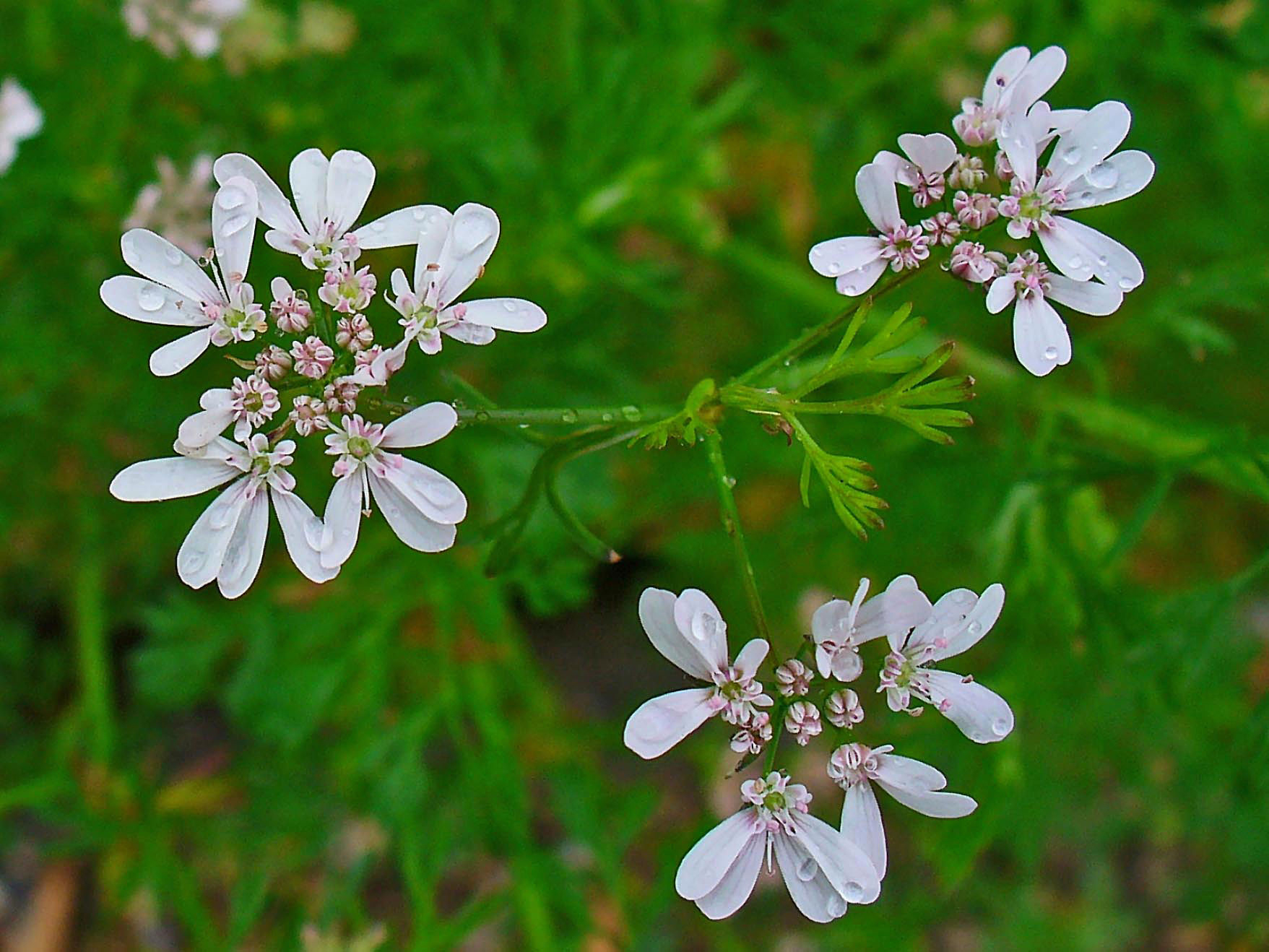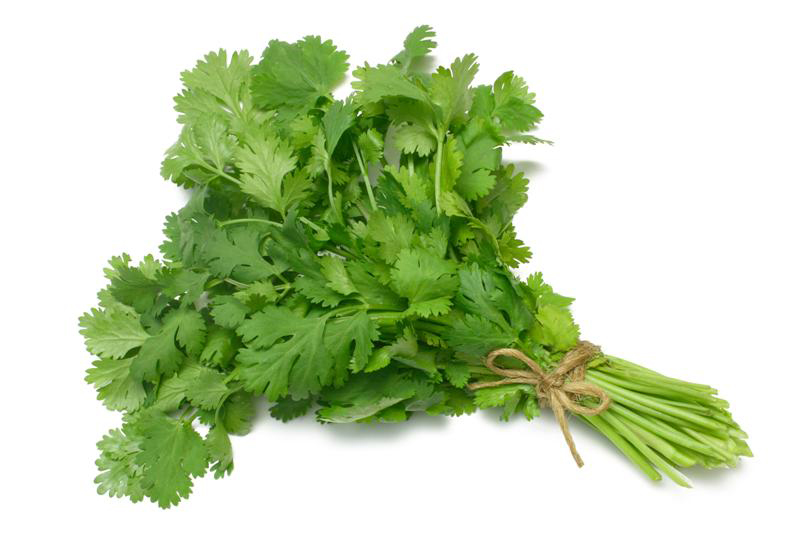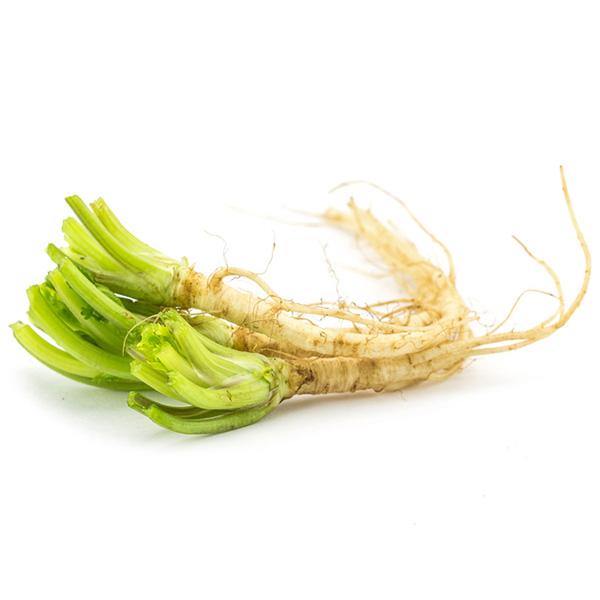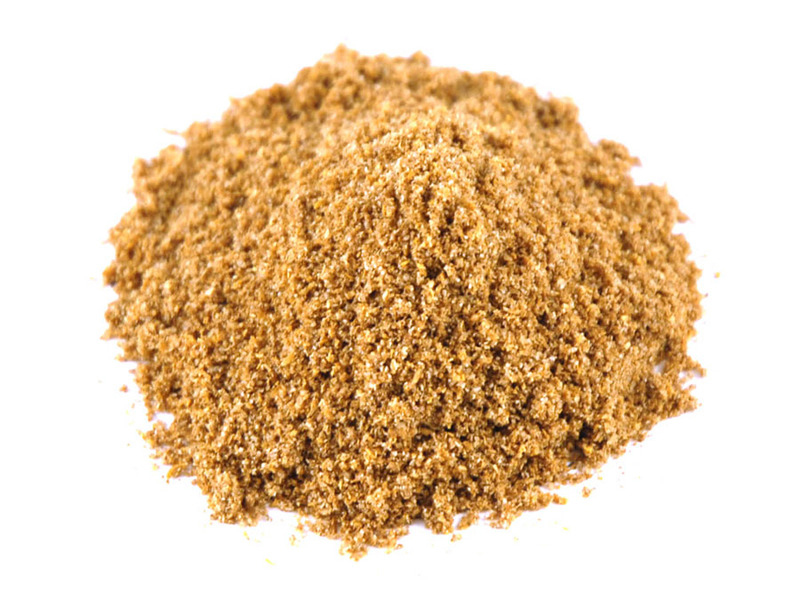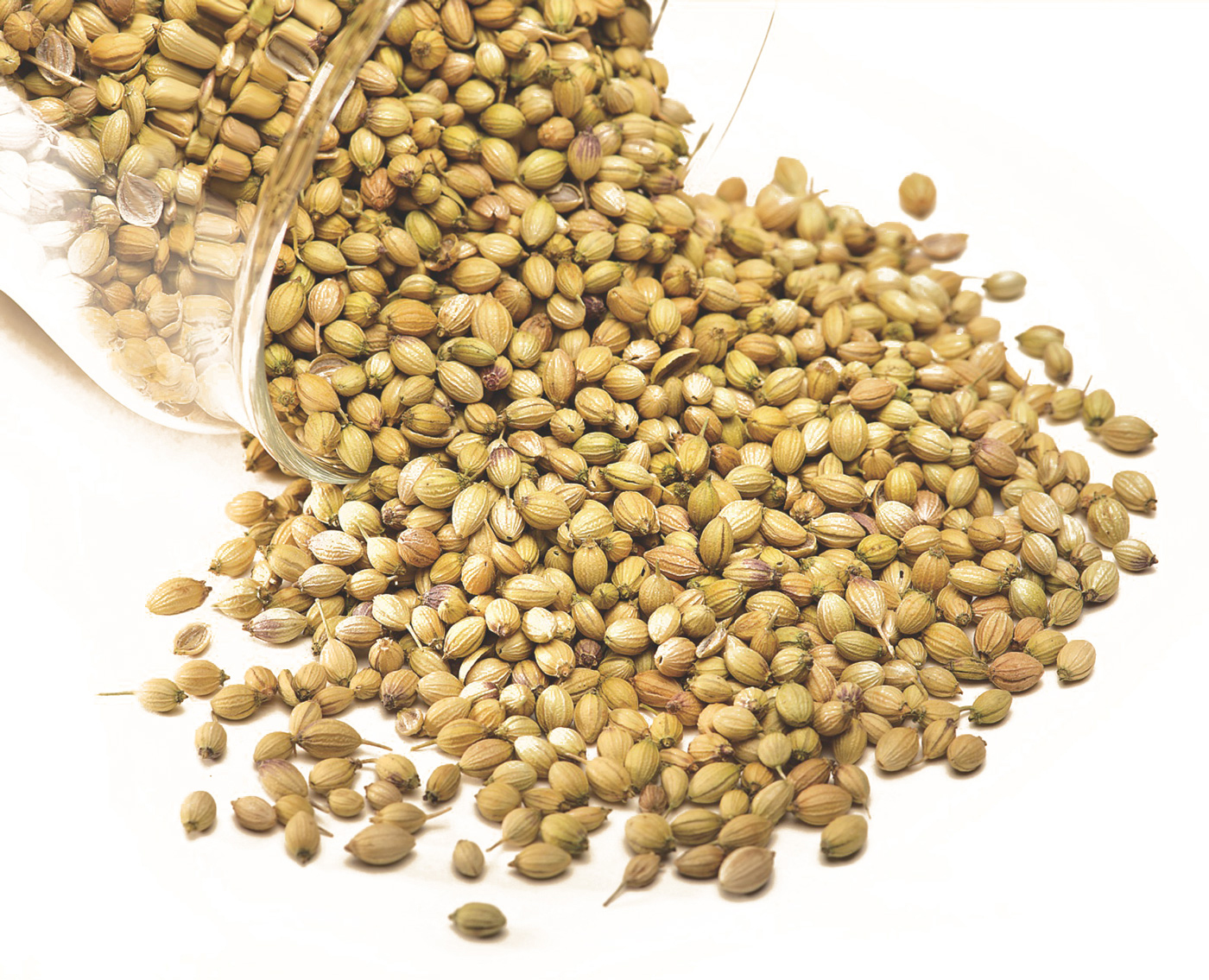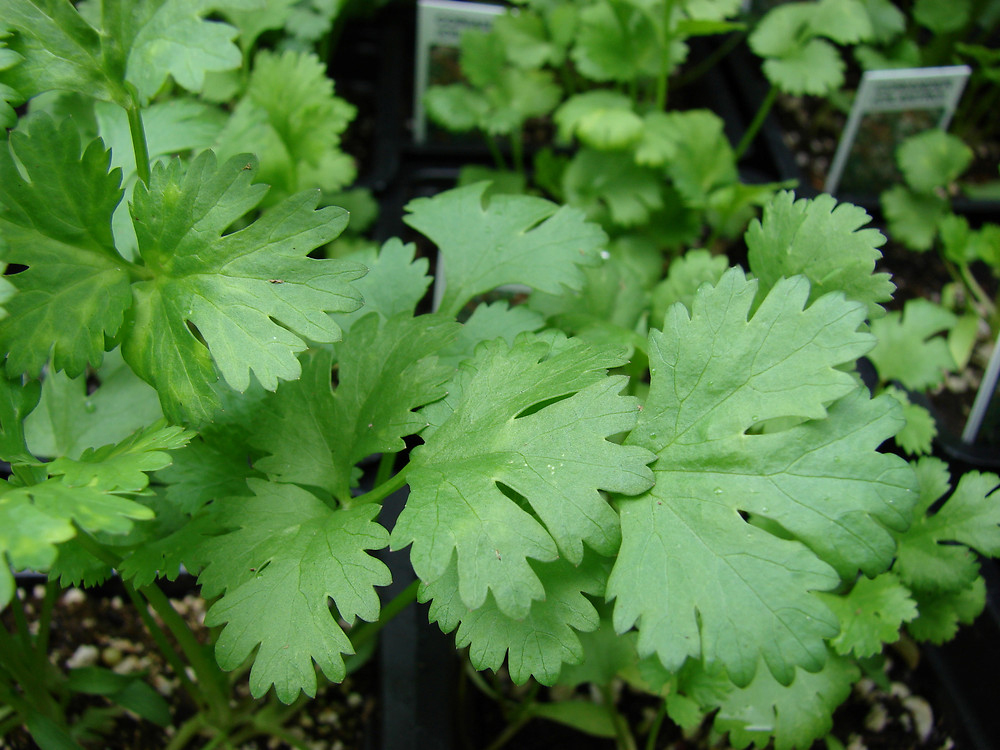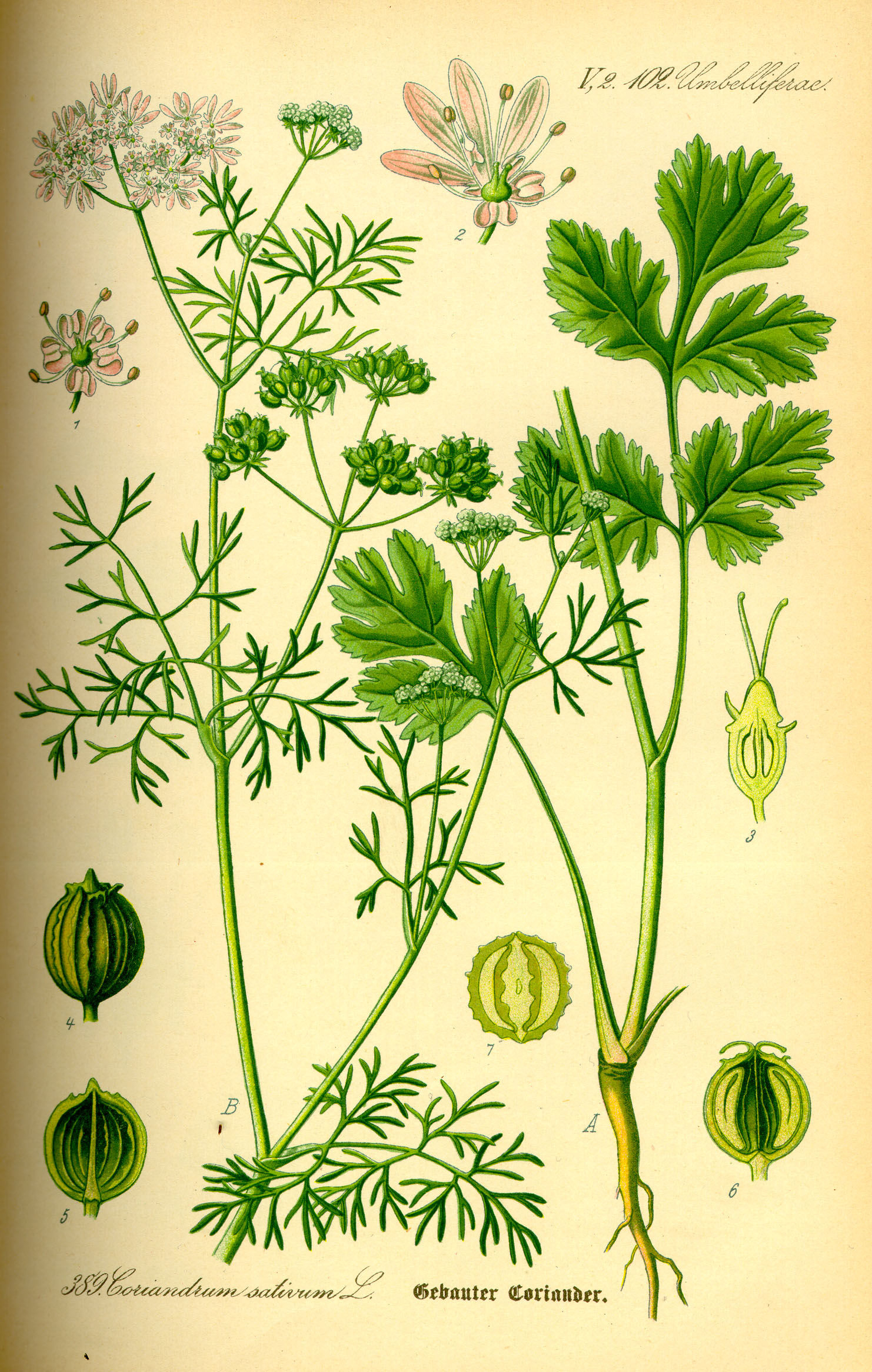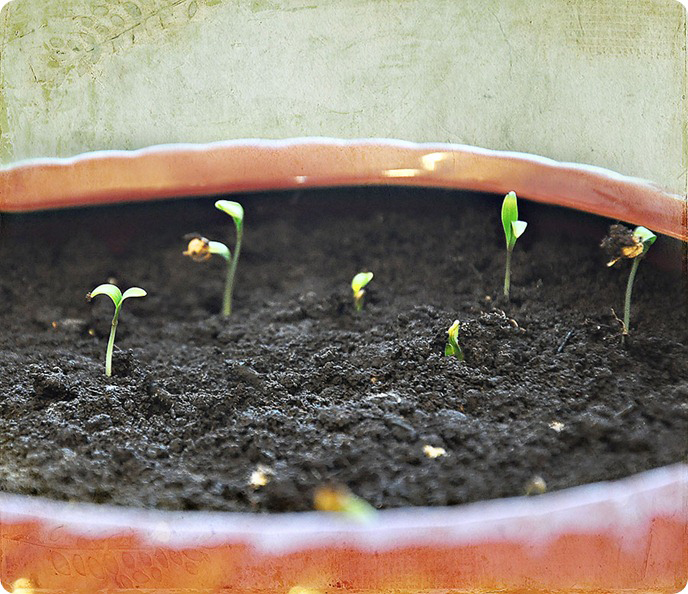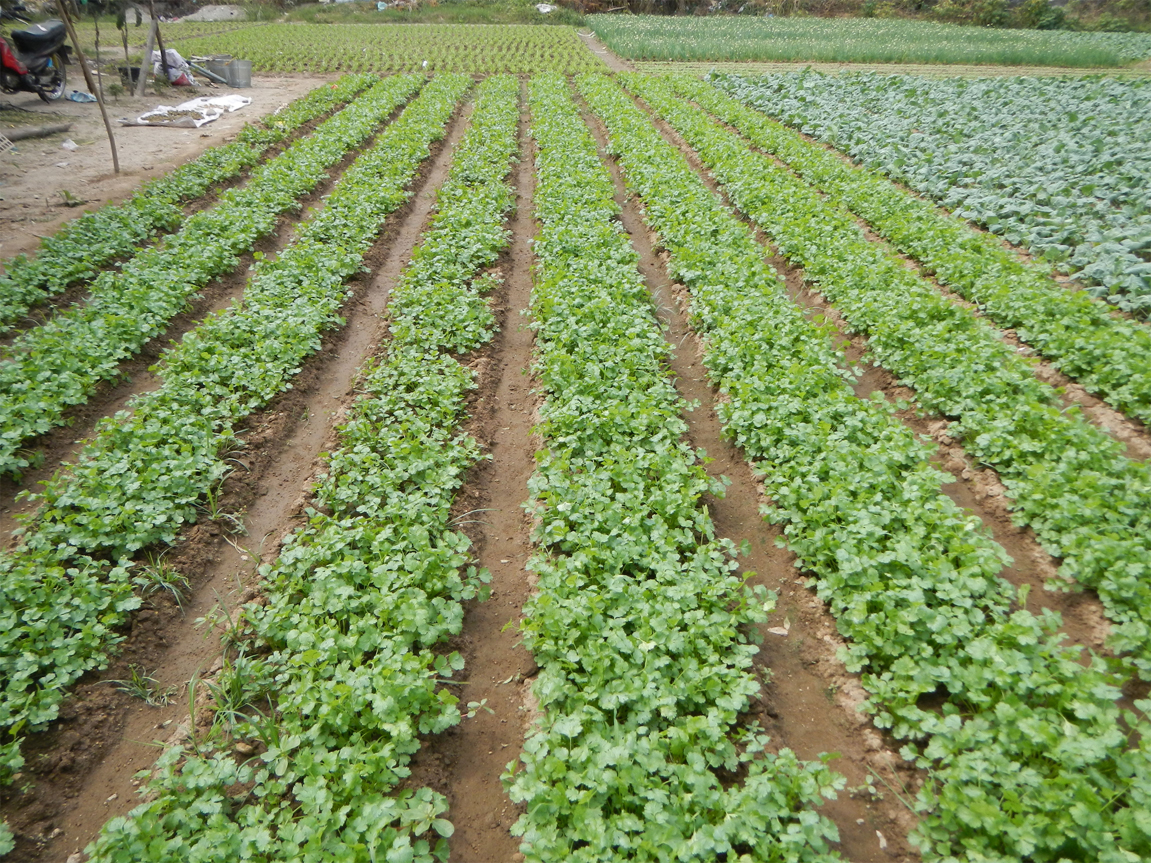Coriander is widely used in Mexican, Indian, European and Middle Eastern dishes. Two cultivar of Coriander exist: Moroccan and Indian. Common names for this herb include Cilantro, Chinese Cilantro, Coriander and Chinese parsley.
History
Coriander has been recognized for more than 3000 years in southern Europe and for 5000 years in Asia. It was cultivated for medicinal and culinary purposes by ancient Romans and Egyptians. The cultivation of coriander started about 2000 years BC. It was originated from South Europe, West Asia and North Africa. According to the evidences Coriander is one of the ancient herbs.
Plant
Coriander is an annual, short, fast-growing and herbaceous plant which prefers dry climates and thrives in well-drained soils. The plant grows up to 1-3 feet high. The upper leaves of the plant are feathery whereas the lower leaves are roundish and lobed. The leaves are green or light green in color. The flowers are white or pink and 1.6 in. (4 cm) across. The stem is green, erect, sympodial; monochasial-branched which grows up to the height of 75 cm having 2 cm as a diameter. The plant blooms during late summer.
Seed
The plant yields a seed as a fruit. The brownish seeds are round, globular or ovate in shape, 1/4 inch long and 6 mm as a diameter. The seeds possess sweet, nutty, warm and orange flavor.
Nutritional Value
About 20 gram of Coriander leaves contains 5 calories, 0.73 gram of carbohydrate, 0.1 grams of fat, 0.43 gram of protein, 3% daily value of Vitamin B9 and 6% daily value of vitamin C. It possesses the antioxidants such as Selenium, Ascorbic acid, Vitamin A, Beta carotene and Vitamin E.
Health Benefits of Coriander
Coriander provides various health benefits aside from being used as a spice. Coriander has anti-inflammatory and anti-septic properties which help to promote the health. It is an excellent source of protein, Vitamin K and C. It provides relieve from indigestion, skin inflammation, diarrhea, high cholesterol levels etc.
- Reduce inflammation
Coriander possesses antiarthritic and antirheumatic properties which lessen the swelling caused by anemia or kidney malfunction. It promotes urination which helps to eliminate the excess water from the body. It also helps to improve the appearance of skin and also reduces discomfort. (1)
- Skin ailments
The presence of detoxifying, disinfectant, antifungal, antiseptic and antioxidant properties in coriander helps to cure the skin ailments such as dryness, eczema and fungal infections. (2)
- Reduce cholesterol
The Coriander possesses oleic acid, linoleic acid, stearic acid, palmitic acid and ascorbic acid which help to lower the level of cholesterol effectively. It also lowers the bad cholesterol level in the inner walls of veins and arteries that are the cause of heart attacks, atherosclerosis and strokes. It prevents from various health ailments. (3)
- Aid digestion
Borneol and Linalool is found in Coriander which helps to enhance digestion, liver function and bowel movements that helps to reduce diarrhea. The fungal and microbial action of Coriander helps to treat diarrhea. The components such as Alpha-pinene, Limonene, Borneol, Cineole and beta-phelandrene provide antibacterial effects.
Coriander also prevents vomiting, nausea and stomach disorders. It is a power packed plant that has bioactive compounds. Furthermore, the leaves of Coriander serve as excellent appetizers. (4) (5)
- Reduce blood pressure
The daily intake of Coriander by the hypertension patients helps to reduce the blood pressure effectively. The interaction of Cholinergic and Calcium ions helps to ease the tension of blood vessels and also lowers the risk of cardiovascular conditions such as strokes and heart attacks. (6)
- Heals mouth ulcers
The component known as Citronelol found in Coriander serves as an antiseptic. It also provides the healing and antimicrobial effects that prevents from worsening the condition of ulcers and wounds in the mouth. It also speeds up the healing process along with freshening breath. The chewing of Coriander seeds helps to reduce the bad breath. (7)
- Prevents anemia
Coriander contains good amount of iron which is helpful for the anemia patients. The deficiency of iron in blood leads to heart palpitations, shortness of breath, low cognitive function and extreme fatigue. Iron assist in proper functioning of the organs in the body, enhance bone health and increase energy. (8)
- Anti-allergic activity
An anti-histamine properties in Coriander helps to lower the uncomfortable condition caused by hay fever and seasonal allergies. The application of Coriander oil can lower the allergic reactions on the skin. It can eliminate hives, anaphylaxis and swelling of the glands and throat. (9)
- Protects salmonella
Salmonella is the illness caused by the food. Coriander is high in dodecenal which is powerful than an antibiotic. The addition of Coriander to the diet helps to prevent the uncomfortable body caused by this bacteria. (10)
- Healthy bones
Coriander is rich in Calcium which helps to enhance the bone health. Minerals such as calcium and others help in the durability, regrowth of bones. It also prevents the degradation of bones related with diseases such as osteoporosis. Coriander should be added to the diet in order to have healthy and strong bones. The Coriander leaves possess the calcium. (11)
- Assist digestion
Coriander assists in the secretion of digestive juices and enzymes in the stomach by promoting peristaltic motion and digestion. It also treats anorexia which is an eating disorder. The studies have shown that the daily intake of Coriander helps to reduce dyspepsia. The addition of coriander to the diet also prevents from the development of abdominal colic. (12)
- Prevents small pox
Coriander is rich in antimicrobial, anti-infectious, antioxidant and detoxifying components. It also contains the iron and Vitamin C which helps to enhance the immune system. These properties in Coriander prevent and treat smallpox. It reduces the pain along with providing the calming effect on the smallpox patients. The studies show that the high amount of Vitamin C cures the smallpox effectively in various cases.
- Regulates menstrual cycle
As Coriander is a natural stimulant, it regulates the menstrual cycles by reducing the pain related to the woman’s period. It assists in the proper secretion from endocrine glands.
- Vision health
Coriander possesses antioxidants, Vitamin C, Vitamin A and phosphorus which help to prevent the eye ailments such as macular degeneration and conjunctivitis. It also lowers the stress and strain on the eyes. The leaves contain beta-carotene that forbid the eye disease and also reverse the vision degradation effects in aging patients.
- Diabetes
Coriander provides the stimulating effect on endocrine glands that assist to increase the insulin secretion from pancreas which also increases the blood insulin level. It regulates the sugar absorption and assimilation that results in the drop of sugar level in blood. The Coriander helps to reduce the risk of harmful spikes, drop of blood sugar levels and also promote the metabolic functions. (13)
https://www.youtube.com/watch?v=p0rZXWFvg80
How to Eat
- Coriander is used as a curry powder or spice.
- The seeds are used as a spice for pickle, curries, soups, sausages, stews and ratatouille.
- Chutneys and sauces are prepared from the young plant.
- Coriander is used to add flavor in several alcoholic beverages.
- It is used as an important ingredient for preparing salads, salsas and burritos in Mexico and the southwestern United States.
Precautions
- Coriander may reduce the blood sugar levels and blood pressure.
- Coriander raises the drowsiness which is caused by some drugs.
- Coriander increases the sensitivity of the skin to the UV rays and sunlight.
- Allergic reactions such as itching, rash, swelling, breathing trouble and severe dizziness are possible.
- The people with bleeding disorders should avoid the use of Coriander because it may increase the chances of bleeding.
- Those who are sensitive to the Apiaceae family should avoid it.
- One should take an advice of a physician before using Coriander with drugs because it might interfere with some drugs.
Traditional uses
- Coriander seeds are believed to support digestion.
- Coriander is also used to treat rheumatism and ulcers.
- In India, the seeds are used as carminative, tonic, diuretic, stomachic, refrigerant, antibilious and aphrodisiac.
- Coriander is prescribed for digestive problems, pain in the joints and haemorrohoids.
- The Ayurvedic medicine considers Coriander as tridoshic.
- The diuretic property helps to control mild diabetes.
- The Iranian folk medicine uses Coriander to provide relief from insomnia and anxiety.
Other Facts
- Coriander is used in Mexican, Indian, European and Middle Eastern dishes.
- Coriander possesses phytochemicals which can delay food spoilage.
- Coriander is used by ancient Greeks as a food and perfume ingredient.
- People only consume seeds and leaves though all parts of coriander could be consumed.
- Leaves are added before serving because heat ruins the flavor of Coriander.
- Some types of rye bread also possess the coriander seed.
- Coriander seeds are available whole or ground.
Coriander – Coriandrum sativum facts
Coriander is an annual herb which is used mostly for seasoning dishes. The seeds, roots and leaves possess distinct flavors. Coriander leaves is also called cilantro has a bright and citrus like flavor. Coriander leaves are added to the cuisines from Latin American to Asian. Coriander is known for its antioxidant, anti-mutagenic, anti-diabetic, antianxiety and antimicrobial activity. It provides hormone balancing and analgesic effect.
| Coriander Quick Facts | |
|---|---|
| Name: | Coriander |
| Scientific Name: | Coriandrum sativum |
| Origin | Southwestern Asia and northern Africa |
| Colors | White or pink flowers; Across: 1.6 in. (4 cm) |
| Shapes | Round, globular or ovate; Diameter: 6 mm; Length: 1/4 inch |
| Calories | 5 Kcal./cup |
| Major nutrients | Vitamin K (51.67%) Vitamin A (9.57%) Vitamin C (6.00%) Copper (5.00%) Iron (4.38%) |
| Health benefits | Reduce inflammation, Skin ailments, Reduce cholesterol, Aid digestion, Reduce blood pressure |
| Name | Coriander |
|---|---|
| Scientific Name | Coriandrum sativum |
| Native | Southwestern Asia and northern Africa |
| Common/English Name | Cilantro, Chinese Cilantro, Coriander, Chinese Parsley |
| Name in Other Languages | Arab:- kuzbara Armenian:- chamem Chinese:- yuan sui Czech:- koriandr Danish:- koriander Dutch:- koriander English:- coriander Ethiopian:- dembilal French:- coriandre Georgian:- kinza German:- Koriander Greek:- koriannon Hindi:- dhania Malay:- ketumbar Sanskrit:- dhanayaka Serbokroatian:- korijander Spanish:- coriandro Swiss:- Chrapfechörnli Turkish:- kisnis |
| Plant Growth Habit | Annual, short, fast-growing, herbaceous |
| Growing Climate | Dry climate |
| Soil | Well-drained soil |
| Plant Size | 1-3 feet |
| Lifespan | One year |
| Root | Broad global roots |
| Stem | Erect, sympodial, monochasial-branched; Green; Diameter: 2 cm; Height:75 cm |
| Leaf shape and size | Upper leaves: feathery; Lower leaves: roundish and lobed |
| Leaf color | Green or light green |
| Leaf flavor/aroma | Strong, sage citrus flavor |
| Leaf taste | Grassy, lemony |
| Flowering Season | Late summer |
| Flower | White or pink flowers; Across: 1.6 in. (4 cm) |
| Seed shape & size | Round, globular or ovate; Diameter: 6 mm; Length: 1/4 inch |
| Seed color | Brown |
| Seed Flavor/aroma | Sweet, nutty, warm and orange |
| Varieties/Types |
|
| Major Nutritions (Leaves) | Vitamin K (phylloquinone) 62 µg (51.67%) Vitamin A, RAE 67 µg (9.57%) Vitamin C (Ascorbic acid) 5.4 mg (6.00%) Copper, Cu 0.045 mg (5.00%) Iron, Fe 0.35 mg (4.38%) Manganese, Mn 0.085 mg (3.70%) Vitamin E (alpha-tocopherol) 0.5 mg (3.33%) Vitamin B9 (Folate) 12 µg (3.00%) Riboflavin (Vitamin B2) 0.032 mg (2.46%) Pyridoxine (Vitamin B6) 0.03 mg (2.31%) |
| Health Benefits |
|
| Calories in 9 sprigs (20 gm) Leaves | 5 Kcal. |


